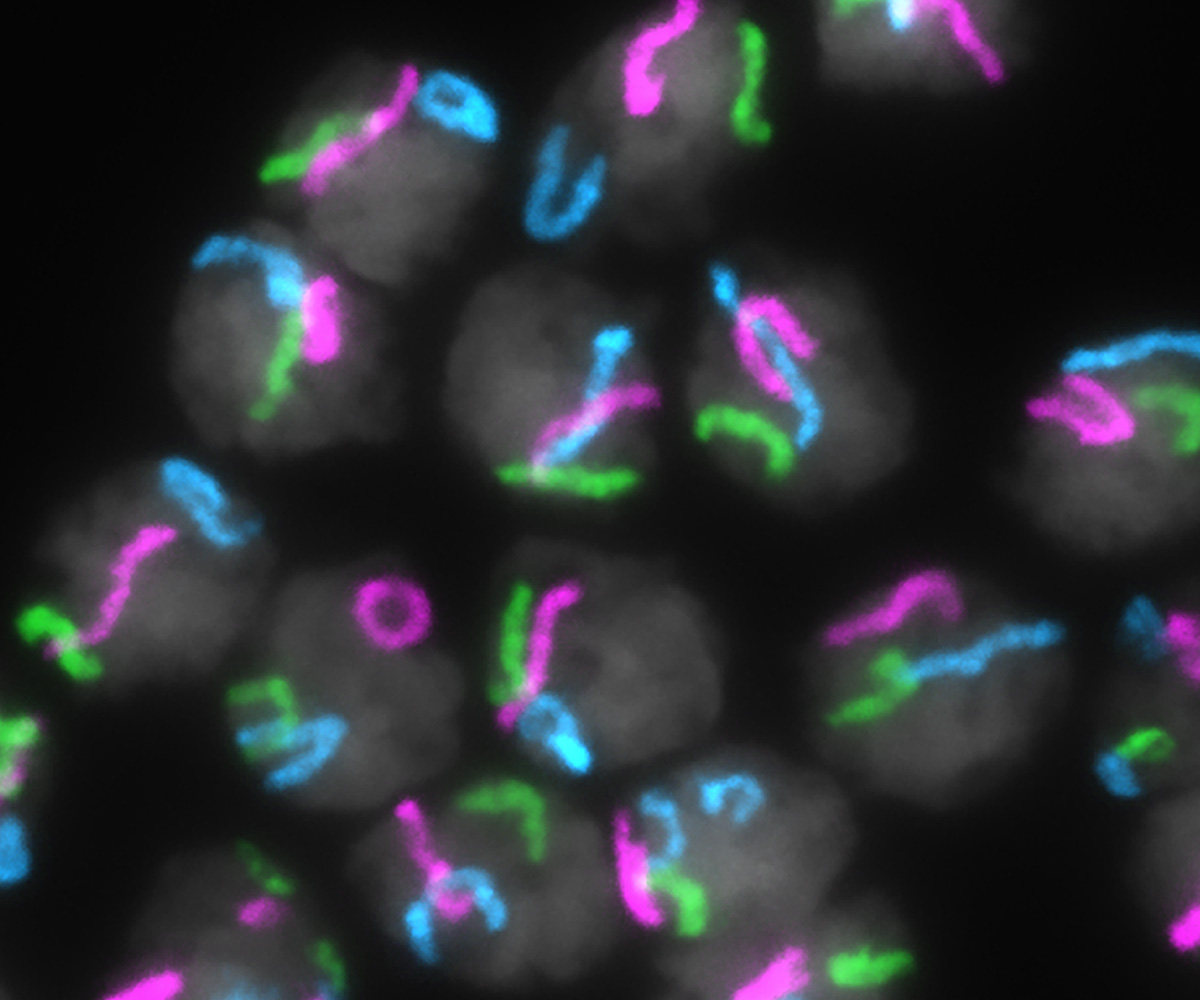
Fluorescence microscopy image of silkworm (Bombyx mori) meiotic cells with chromosomes labeled using the Oligopaint method. Three of the 28 chromosomes are painted in pink, green, and blue. Total DNA is shown in gray.
Credit: Rosin Lab
During the creation of egg or sperm cells—a specialized cell division called meiosis—homologous chromosome pairs (one copy from mom and one from dad) need to find each other for genetic recombination before the cell divides in nearly all species. One of the biggest mysteries in biology is understanding how chromosomes find each other and distinguish homologs from other chromosomes.
In a review from the Rosin Lab at NICHD, researchers discussed recent data on how homologs are linked and partitioned during meiosis in the unusually meiosis that occurs in male fruit flies, which are a model organism for understanding development.
- In male flies, homologs do not under genetic recombination. Many recent studies have focused on understanding this atypical meiosis.
- Germline pairing in fruit flies is not simply a continuation of somatic pairing. In males, pairing is re-initiated during the pre-meiotic mitotic divisions in germ cells.
- This pairing involves chromosome movements directed by microtubules, as well as the proteins C(3)G and corona, which are found in the synaptonemal complex.
- Once paired, homologs are partitioned into spatially separated chromosome territories. This process is at least partially driven by the action of a protein called Condensin II.
- Linked chromosomal units are sequestered into a single chromosome territory, regardless of chromosome identity. Afterward, homolog–homolog interactions are stabilized by the “alternative homology conjunction” pathway.
- These new discoveries shed light on many of the perplexities of the recombination-independent mechanisms occurring in fly spermatogenesis.
Reference
Lee LS, Rosin LF. Uncharted territories: Solving the mysteries of male meiosis in flies PLoS Genetics DOI: 10.1371/journal.pgen.1011185 (2024)
Learn more about the Genetics and Epigenetics of Development Affinity Group:
https://www.nichd.nih.gov/about/org/dir/affinity-groups/GED
 BACK TO TOP
BACK TO TOP